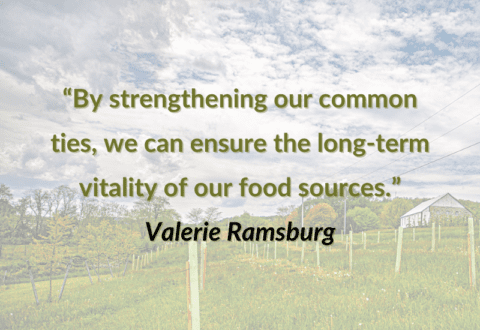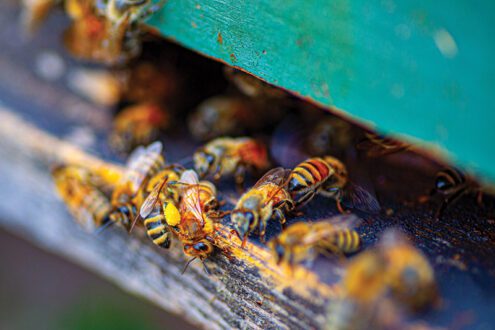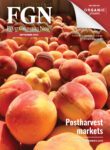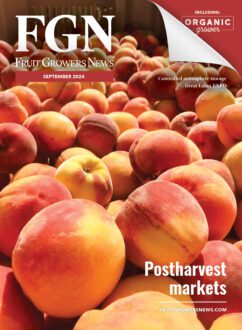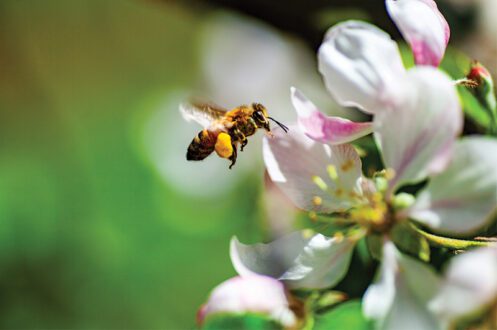
Jun 13, 2024Native plants give local pollinators a kick-start to the season
Mother Nature awakens her spring with a sense of renewal and fresh beginnings. Farmers are acutely in tune with the change in seasons and approach them with their own levels of intensity. They monitor their crops closely, check the weather obsessively, watch for fresh shoots or flower blossoms to emerge and check the weather again.
Then, they await the arrival of one of the most vital contributors to the success of many crops … the bees, which along with other pollinators (butterflies, bats, birds) are responsible for billions of dollars in economic value within the U.S.

Articles have been printed, including “The Value of Pollinators To The Ecosystem And Our Economy” (Forbes, October 2019), that discuss the economic importance of pollinators related to food production.
Pollinators and plants rely on one another for mutual survival. A similar symbiosis occurs between the farmer, their community and the consumer. Pollination is the tie that binds us.
We, and most apple packers, have firsthand knowledge of the domino effect that a “light set,” or poor pollination, has on an apple crop. Not only does it affect the livelihood of farm families, but it also has a direct impact on businesses that support the farms, market availability, food supply and the local economy.
Many agricultural segments rely on hives of European honeybees for pollination. However, a thriving population of native pollinators has been recognized as a sustainable supplement to the honeybee. We can support native pollinators by growing indigenous species of plants.
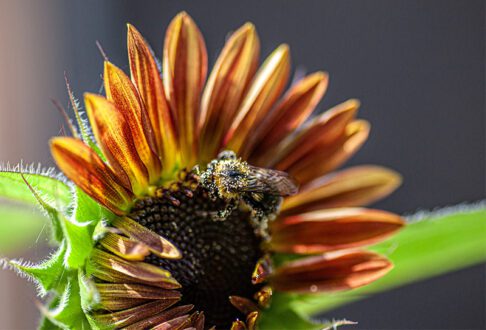
Evolved to be the best suited for our respective soil, climate and seasons, native plants attract and feed native pollinators. When natural habitats thrive, the creatures that provide pollination stay close and do their best work.
Having this type of knowledge made me ask myself what steps we could take to improve the likelihood of consistent successful pollination, as well as make sure that pollinators of all kinds were not just able to survive, but to flourish.
Through this exploration, I discovered the concept of a pollinator sanctuary. Behind the Rice Fruit Company packing facilities, there was a patch of land — once an orchard — that proved to be the perfect setting for phase one of our pollinator sanctuary.
What used to be a vacant field is now bordered by newly planted crab apple trees, a collection of native trees, grasses, and flowering perennials and annuals. Not only does this space encourage the mutually beneficial relationship between native plants and pollinators, it also provides an attractive green space within walking distance for our employees’ enjoyment.
For phase two and three of the project, we will partner with The Alliance for the Chesapeake Bay for a lawn-to-forest planting as well as a lawn-to meadow conversion. The lawn-to-forest planting will consist of regionally specific trees that will create a riparian forest buffer.
Riparian buffers are vegetated areas next to streams, rivers, lakes and wetlands that protect water quality by intercepting sediment and other pollutants before they enter the water. Within the Chesapeake Bay Area Watershed, reduction of water runoff into local streams and rivers is extremely important.
The converted meadowlands will serve as bonus habitat sanctuary, as well as reducing the need for lawn mowing. Between the pollinator sanctuary, the forest buffer and the meadowlands, the end goal is to have something growing undisturbed during all seasons.
While bees hibernate and butterflies migrate, having shelter and a food source always available will help give native pollinators a running start when spring begins. We know that the growing season is a marathon, not a sprint … but that kickstart can make all the difference in the end.
One of the questions we’ve gotten in the past in response to this project was, “Do you really expect one pollinator habitat to make a difference?”
I believe that as a small business and a member of a rural community, Rice Fruit Company helps to set the tone for environmental priorities within our local area.
Perhaps this inspires a neighborhood to start a community garden or encourages another business to make their own pollinator sanctuary garden. By taking small steps in protecting these vital insects and their habitats, we can create more sustainable environments for our food sources.
Over time, these little changes add up to big change — and do you know what that is called? The butterfly effect.
By strengthening our common ties, we can ensure the long-term vitality of our food sources. The results of taking initiative, educating yourself in the value of these relationships and supporting the creatures that allow us to continue to grow and provide food is a benefit to everyone: cleaner air, purer water, more fruits, more vegetables … more of the good stuff.
About the author

Valerie M. Ramsburg is the digital and print marketing manager for Rice Fruit Company, and a member of the Fruit + Vegetable 40 Under Forty Class of 2023 honorees. She is also a member of the U.S. Apple Communications Committee and is responsible for the implementation of the Rice Fruit Company pollinator garden initiative.


